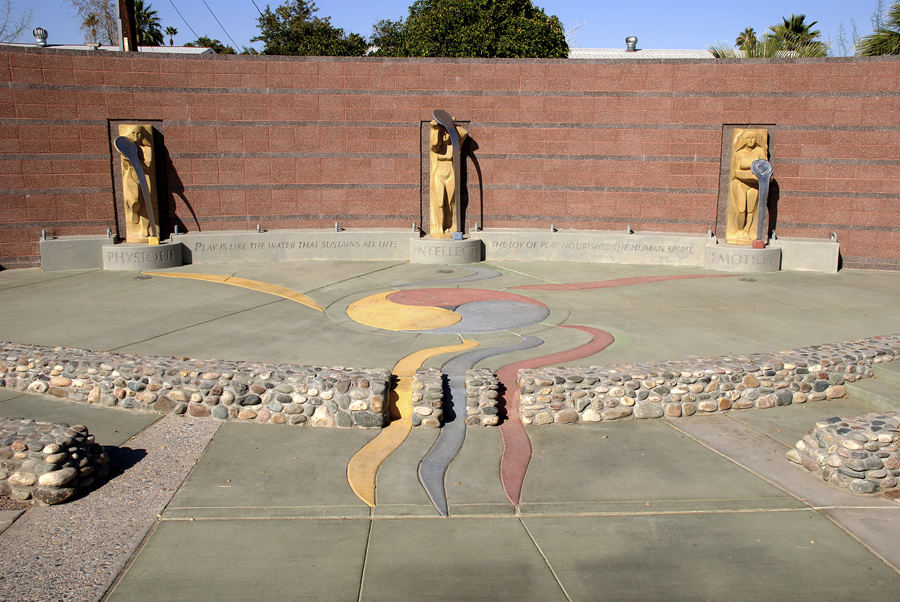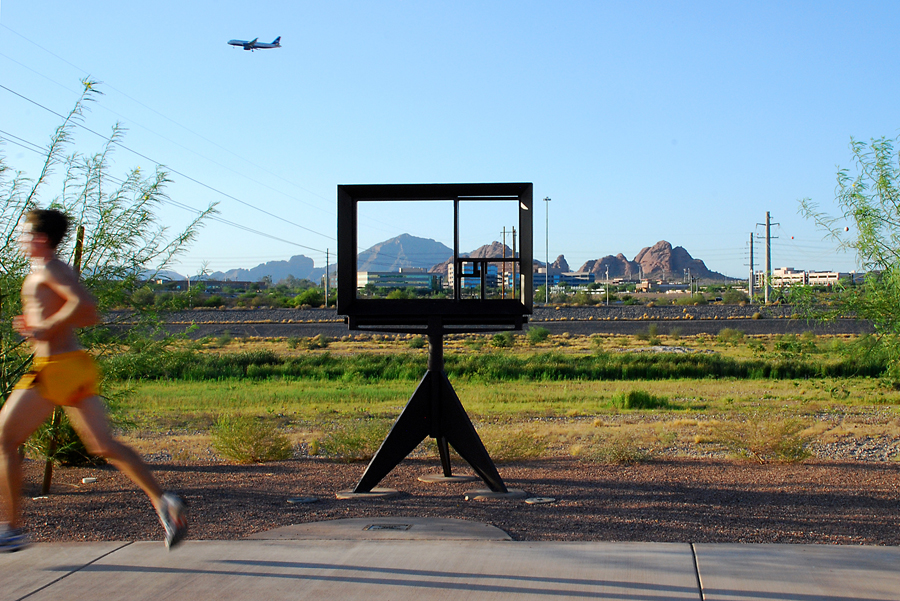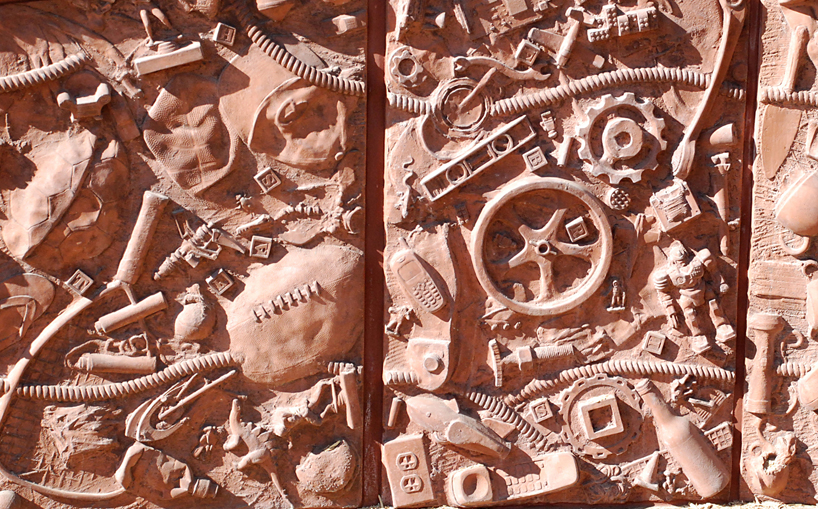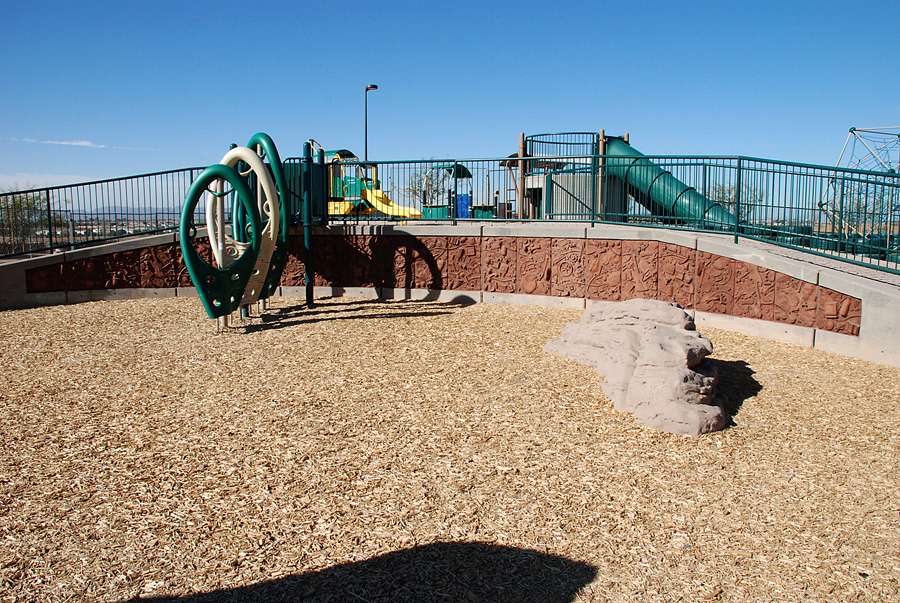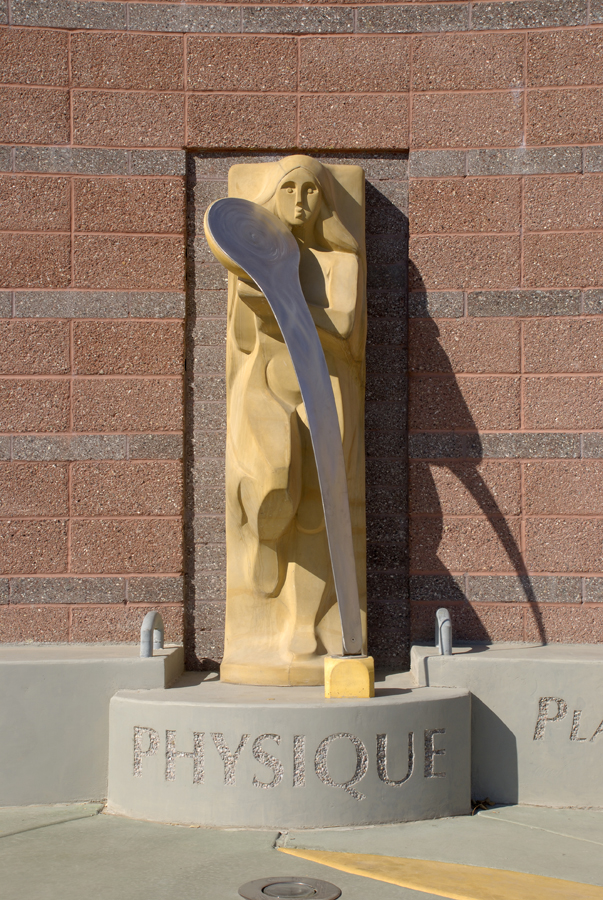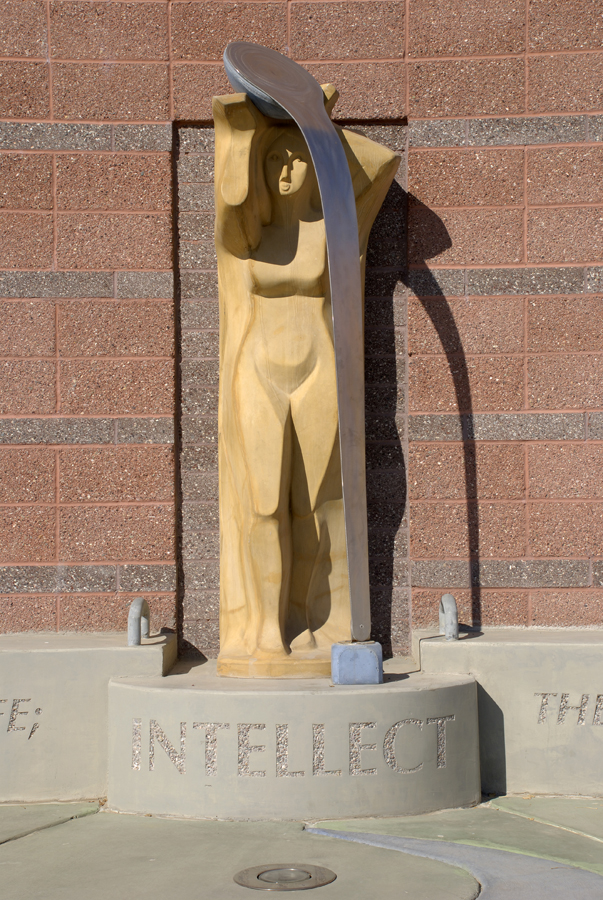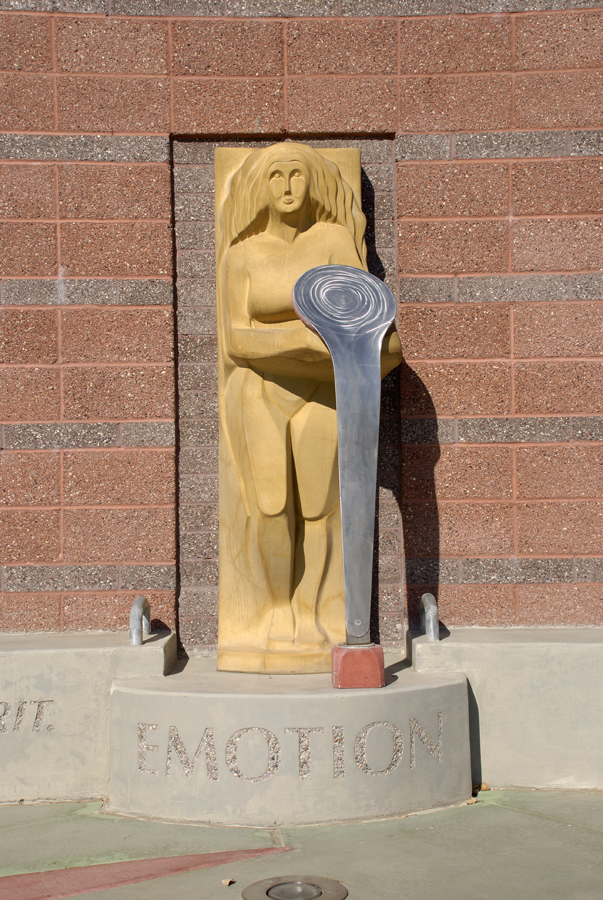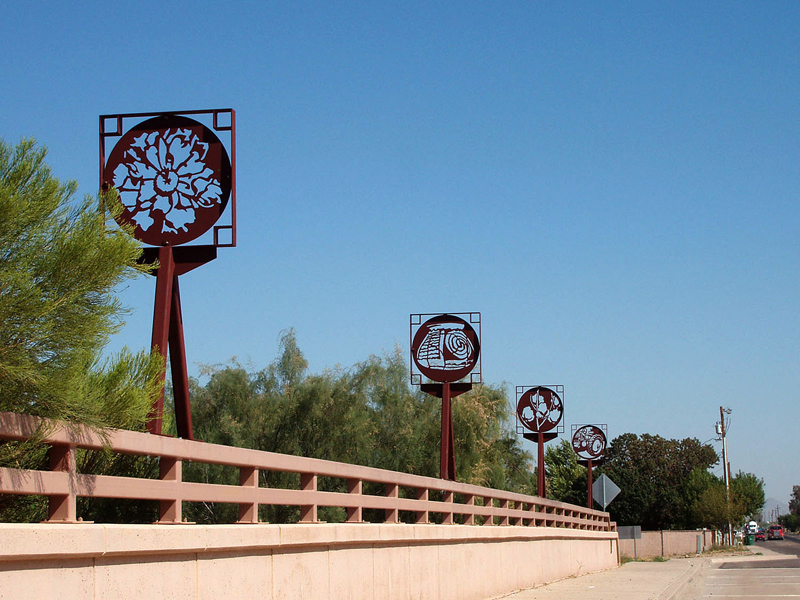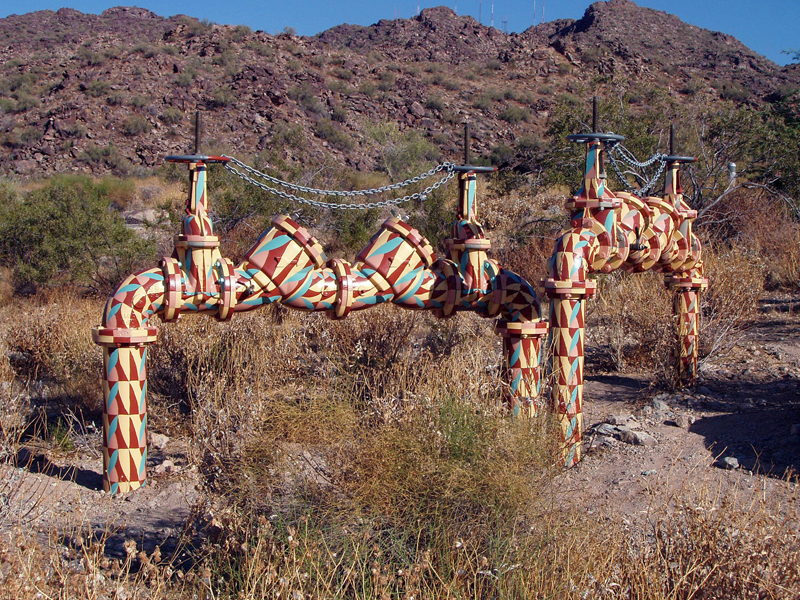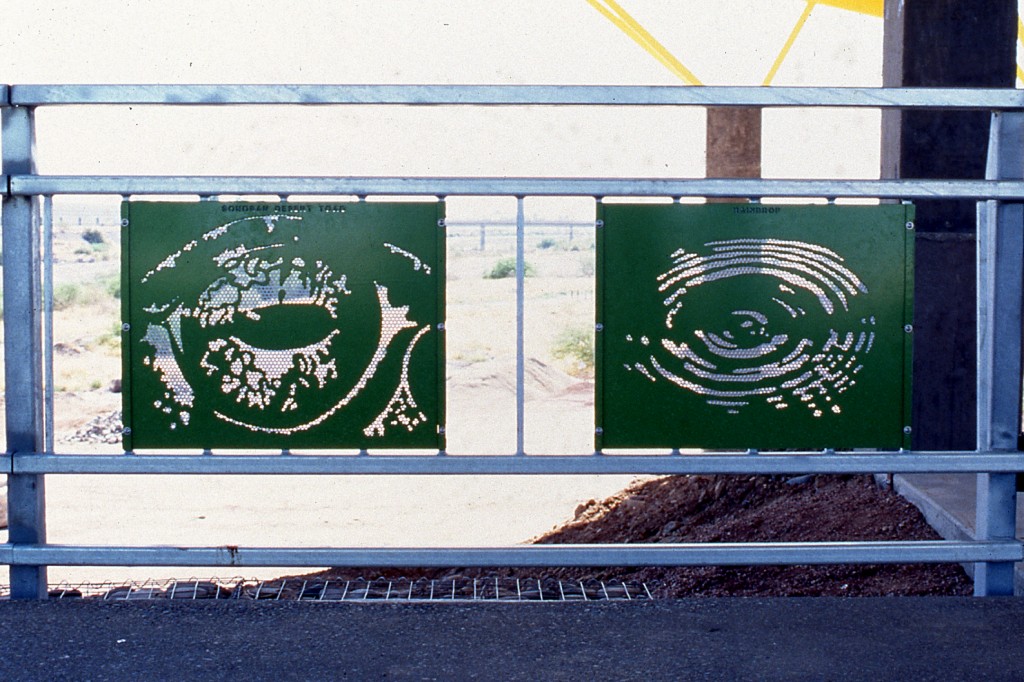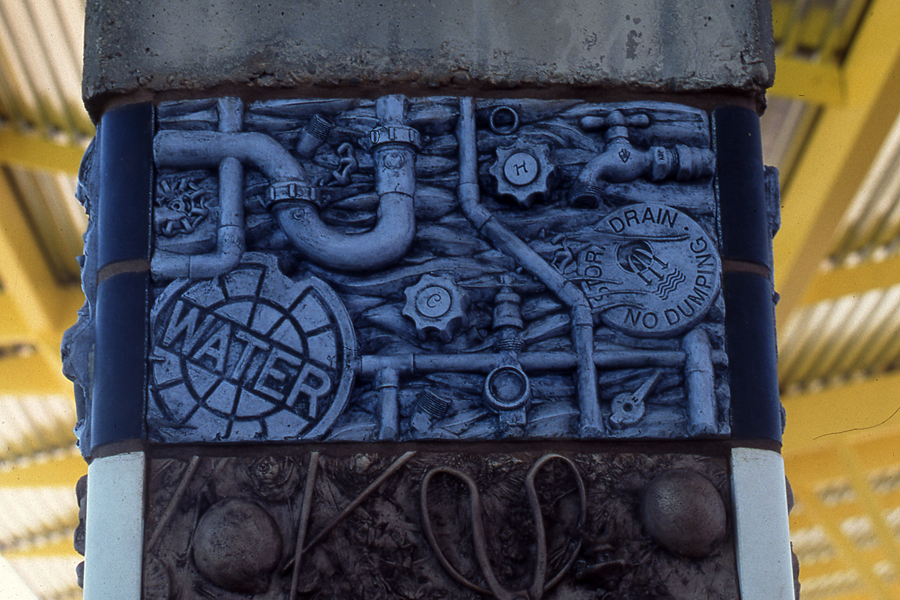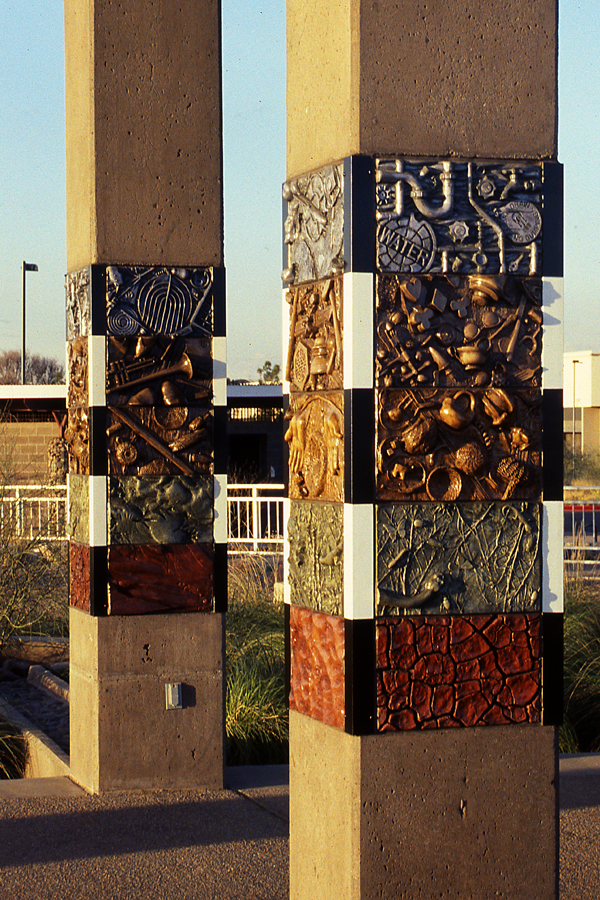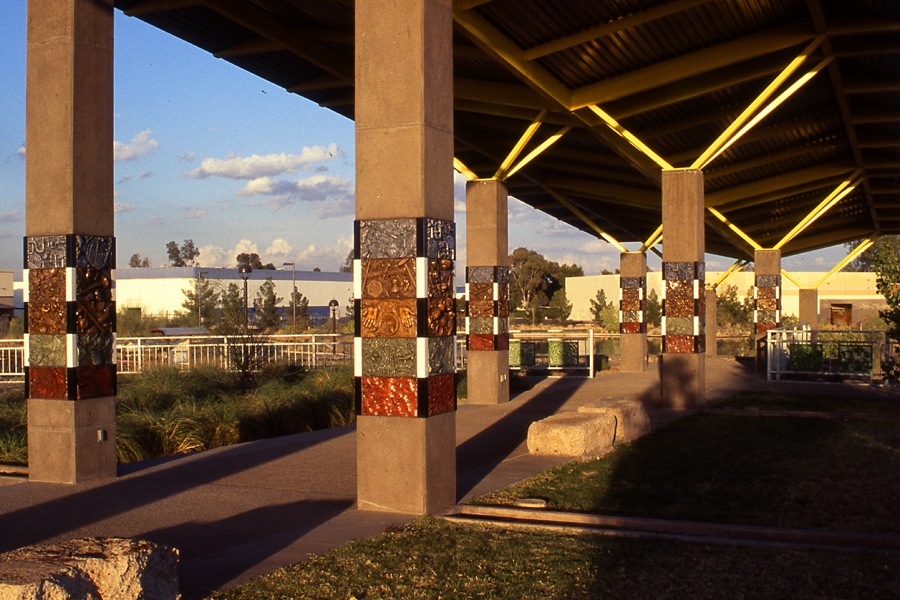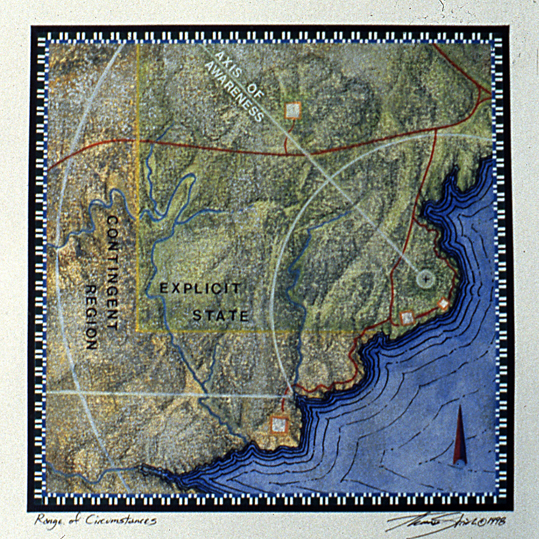Fibonacci’s Window looks out on the Salt River and toward the Papago Buttes from its location on the popular Rio Salado South Bank Path. Fibonacci’s Window was inspired by the work of Leonardo Fibonacci, an Italian mathematician from the 12th Century who first recognized the Fibonacci Sequence. The Fibonacci Sequence is a sequence of numbers that, as as they increase, come closer and closer to the Golden Ratio. The Golden Ratio, first discovered by the ancient Greeks, describes the ratio between the lengths of the sides of the Golden Rectangle. The Golden Ratio is also known as by the Greek letter phi, with the value 1.618… The Golden Rectangle has, through the centuries, been thought to be the rectangle with the most beautiful proportions. Fibonacci’s Sequence, and the Golden Ratio are found in growth patterns throughout the natural world. Fibonacci’s Window is comprised of a series of Golden Rectangles.
For the Rio Salado South Bank Path, the City of Tempe commissioned a design team to create site enhancements and public art for the formerly barren river bank. The enhancements the design team generated became known as The Creative Edge. The design team for The Creative Edge consisted of: Ruben Valenzuela, landscape architect; Virginia Senior, architect; Thomas Strich, artist; and Jeff Oesterle, fabricator. Thomas Strich’s sculptures are enjoyed as strong features on a pathway now used by numerous pedestrians, runners, skaters, and cyclists.
